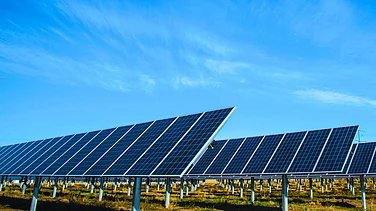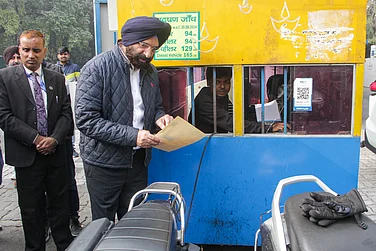As climate discussions heat up on the global stage, the need for nations, regions and communities to collaborate has never been more urgent.
From the halls of the United Nations General Assembly (UNGA) to India’s own climate forums, it is clear that global cooperation is key to addressing the most pressing climate challenges.
India, with its vast population and dual identity as both a climate vulnerable and a climate leading nation, is poised to play a pivotal role in shaping these conversations.
Adaptation is the Future
A significant shift is underway in the global climate discourse. Once centered on mitigation (reducing carbon emissions), the focus has now expanded to adaptation—preparing for and managing the inevitable impacts of climate change.
Recent global events like COP28 and the United Nations General Assembly (UNGA) Science Summit have brought attention to pressing issues such as food security, land degradation and energy poverty, especially in vulnerable regions like Africa. One of the standout initiatives is Mission 300, a groundbreaking partnership aimed at providing electricity to 300 million people in Africa by 2030.
Prominent leaders, including Akinwumi Adesina of the African Development Bank and Ajay Banga of the World Bank, emphasised that energy access is more than an economic necessity; it’s a moral imperative. As Banga succinctly put it, “There is no dignity without electricity”, highlighting the deep connection between energy poverty and social inequality.
The focus on adaptation is also reflected in climate finance discussions. The United Nations Environment Programme (UNEP) Adaptation Gap Report underscores the vast disparity between the adaptation needs of developing countries and the financial support available. While ambitious initiatives like the Global Energy Alliance for People and Planet (GEAPP) aim to bridge this gap, the scale of the challenge demands much greater mobilisation of public and private funds.
India at the Frontlines
At India Day at the UNGA, hosted by the Observer Research Foundation (ORF), the Reliance Foundation, United Nations India and the Consulate General of India in New York, India’s role as a global leader in sustainable development, digital innovation and women-led climate initiatives took centre stage.
A key highlight was India’s focus on the LiFE Economy (lifestyle for environment)—a concept championed by Prime Minister Narendra Modi. This innovative approach emphasises sustainable consumption, circular economies and ethical governance. Endorsed in the G20 Bali Leaders Declaration, the LiFE Economy offers a guiding framework for sustainable growth, showcasing India’s potential to influence the global climate agenda.
India’s multi-dimensional approach to climate action reflects its unique position. While millions in India depend on climate-sensitive sectors like agriculture, the country is also a global leader in renewable energy, digital infrastructure and climate finance.
As Binaya Srikanta Pradhan, the consul general of India to New York and Samir Saran, president of ORF, highlighted during India Day, India’s journey in digital financial inclusion and public service delivery offers valuable lessons for other developing nations.
Key Takeaways
Energy transition: India’s ambitious goal of achieving 500 gigawatts (GW) of renewable energy capacity by 2030 showcases the feasibility of large-scale renewable adoption, even in developing economies. However, as India transitions to renewable energy, ensuring that this transition is equitable—reaching rural and marginalised communities—remains a critical challenge.
Gender and climate: Women-led development is emerging as a vital pillar of India’s climate strategy. India’s G20 presidency introduced the idea of “women-led development,” emphasising that women must be leaders, not just beneficiaries, of climate policies. In rural India, women are at the forefront of climate resilience, playing key roles in household energy management and climate-resilient agriculture.
Technology as a catalyst: India’s digital public infrastructure (DPI) and fintech advancements are revolutionising climate action. The country’s widespread mobile adoption and affordable data have democratised access to public services, healthcare and education. As global climate solutions increasingly rely on technology, India’s success in scaling digital innovations offers a model for other developing nations to emulate.
Lessons for the Global South
India’s leadership in climate action isn’t just about addressing its own challenges—it offers a blueprint for the global south. From women-led development to the LiFE Economy, India’s strategies are creating sustainable, inclusive systems that serve as models for developing nations.
India’s ability to blend innovation with resilience is a powerful message for the world. By focusing on digital transformation, women-led development, and equitable energy transitions, India demonstrates that developing nations can not only participate in but lead global climate solutions.
As the world looks toward COP29 and beyond, the key to building a more resilient and equitable future lies in collaboration. Governments, private sectors and civil society must unite to tackle the climate crisis head-on. India’s pioneering role serves as a beacon of hope, illustrating that with inclusive, innovative approaches, a sustainable future is within reach.
The writer is founder and CEO, Climate Asia and was in the United States to attend Climate Week NYC. Views expressed are personal.























